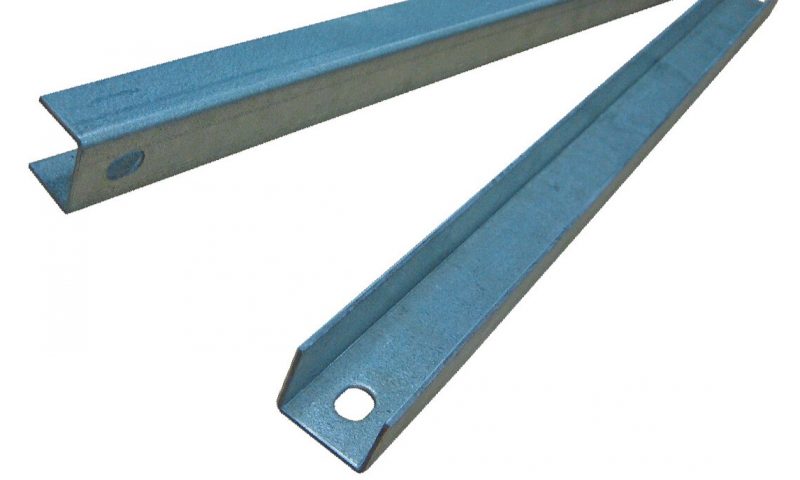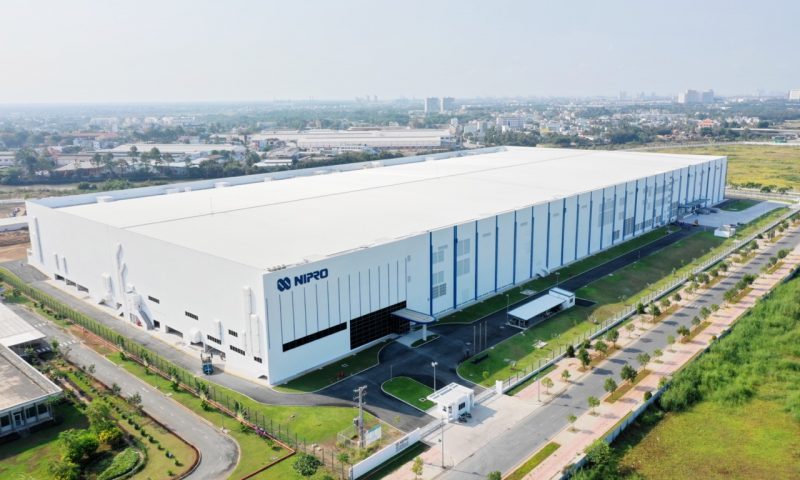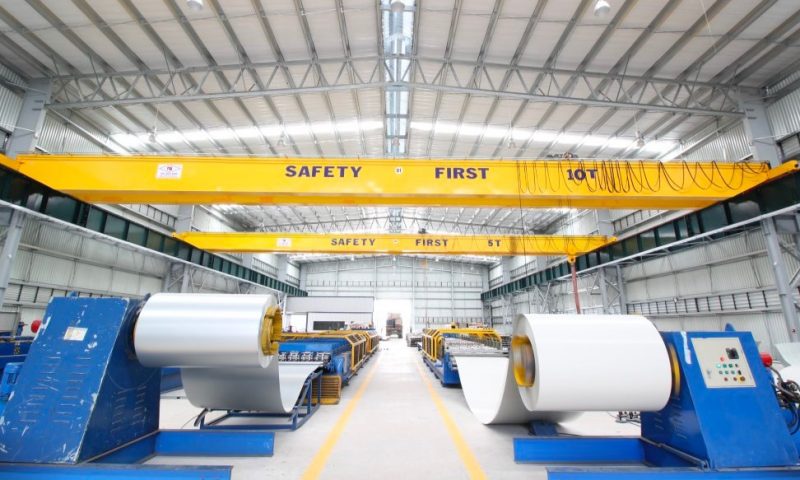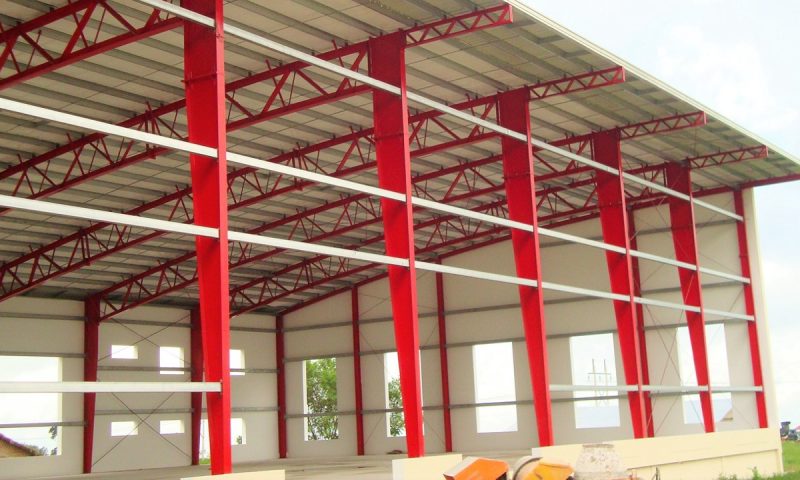To meet fire prevention and firefighting, many investors have chosen the option of applying fire-resistant mortar to steel structures. This is a solution that complies with the fire prevention and firefighting requirements according to Decree No. 136/2020/NĐ-CP. Let’s explore the detailed process of applying fire-resistant mortar to steel structures in this article with Pebsteel.
See more: 5 Ways To Reduce The Heat On Corrugated Iron Roof
What is fire-resistant mortar?
Fire-resistant mortar is a type of material used to coat surfaces of components and steel structures in the construction industry. Its primary objective is to increase the fire resistance capacity of steel structures, especially for components such as air ducts, steel trusses, steel columns, girders, and floors. Additionally, it helps minimize the impact of high temperatures when the fire occurs, ensuring safety for both people and construction.
Fire-resistant mortar is typically in the form of ultra-lightweight powder and is produced from inorganic fire-resistant materials. These materials primarily include Ordinary Portland Cement (OPC) or gypsum, along with some other additives.
See more: Erection of Steel Structures
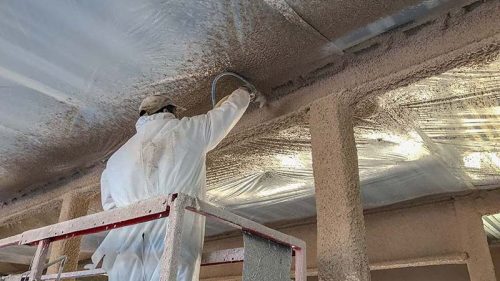
(Source: Vữa chống cháy)
Common types of fire-resistant mortar
Currently, there are two common types of fire-resistant mortar: conventional fire-resistant mortar and thermal insulating fire-resistant mortar.
Conventional fire-resistant mortar
This is a pre-mixed single-component material, primarily composed of heavy aggregates derived from Ordinary Portland Cement, natural minerals, and active regulating additives. It is specially designed to be applied by spray coating methods to provide fire protection for metal structures in projects such as oil and gas facilities, high-rise buildings, and other industrial constructions.
The main goal of this type of mortar is to ensure that, in case of a conflagration, these metal structures do not deform or lose load-bearing capacity, thereby maintaining a safe working environment for employees. Fire-resistant mortar facilitates the construction, maintenance, and repair processes under various weather conditions. After completing the application process, this type of mortar forms a rigid, stone-like coating with the ability to withstand high temperatures, particularly from intense fuel-based fires, such as flame spray.
See more: The Process of Structural Steel And Plate Fabrication
Thermal insulating fire-resistant mortar
This is a lightweight and high-quality fire-resistant mortar, designed specifically for spray application to protect metal structures in projects such as offshore drilling rigs, ships, and structures requiring compliance with high fire resistance standards while maintaining lightweight properties. It is a pre-mixed material composed of lightweight, heat-resistant, and insulating components sourced from thermally treated minerals, heat-resistant concrete, and active adjusting additives.
After completion of the construction, this material system also forms a robust coating like stone, with the ability to withstand the heat impact from high-intensity fuel fires, especially in the case of spray flames.
The process of applying fire-resistant mortar to steel structures
The application of fire-resistant mortar to steel structures requires strict adherence to techniques and procedures to ensure the quality of the construction project. To achieve this, construction conditions are carefully considered. The ideal air temperature is above 10ºC, and the air humidity should be maintained below 85%. Additionally, avoiding rain during the construction process is crucial to ensure a smooth implementation and achieve optimal performance.
Here are the 6 steps for implementing fire-resistant mortar on steel structures:
Step 1: Steel frame surface treatment
Surface treatment plays an important role in the process of applying fire-resistant mortar, as it directly influences the durability, effectiveness, and adhesion capability of the material.
To conduct the surface treatment step, the technician needs to use sandblasting or shot blasting machines, combined with water, to remove dust and rust stains on the metal surface. This process is often conducted according to SA 2.0 or higher standards to ensure that the surface is treated perfectly.
Step 2: Anti-corrosion primer coating
Executing the anti-corrosion primer coating process is a crucial step to enhance the adhesion capability of the material surface and the fire-resistant mortar layer. Simultaneously, it safeguards the steel structures from corrosive agents, maintaining color durability and the aesthetic appeal of the product. Two common types of anti-corrosion primer coatings are alkyd and epoxy, chosen based on the type of material.
The primer coating process can be conducted using paint spray guns, rollers, or brushes. When applying the anti-corrosion primer coat, it is advisable to work in a sheltered environment to avoid rain exposure, ensuring an unaffected workspace and preventing quality degradation due to environmental factors.
After completing the anti-corrosion primer coating, to ensure the painted surface meets standards, it is necessary to wait for the paint film to dry, harden, adhere firmly, and the surface to become smooth before proceeding to step 3 of the construction process.
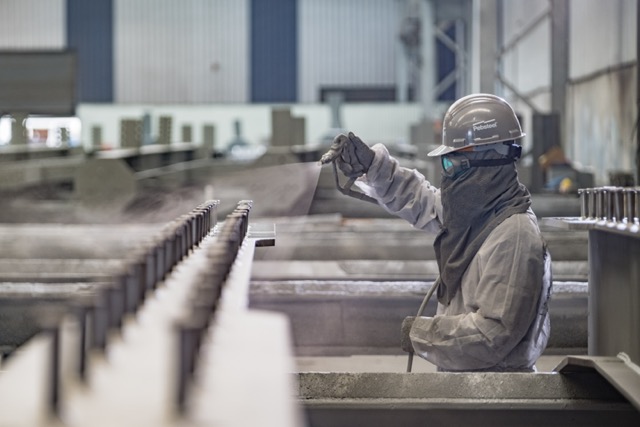
Step 3: Implementation of reinforcing steel mesh
After the anti-corrosion primer coating has completely dried, the next step involves conducting the process of applying the reinforcing steel mesh, also known as expanded metal mesh (Lati steel). This type of steel mesh is produced by stamping from steel sheets and then stretching them using modern machinery technology.
In the selection of steel mesh, it is advisable to prioritize a thickness ranging from 0.5 to 1 mm and mesh openings sized from 10 to 20mm. The Lati steel is then secured around the material surface, which can be achieved through nail shooting or wrapping around.
Furthermore, during the implementation, the technician needs to ensure that the distance between the material surface and the steel mesh does not exceed 5 mm to ensure a tight bond and achieve optimal reinforcement performance.
Step 4: Application of fire-resistant mortar
The thickness of the fire-resistant mortar layer can range from 12.5mm to 50mm, depending on the fire resistance rating requirements.
The process of applying fire-resistant mortar can be conducted using either the spraying or troweling method. For the spraying method, the mortar/water mixing ratio is 1 kg/0.8 kg, while for the troweling method, the ratio is 1 kg/0.6 kg.
During the application process, the worker uniformly sprays each coat with a thickness of approximately 2-3 mm onto the material surface until the mortar layer achieves the required thickness according to standards and meets the specified fire resistance criteria.
Step 5: Color coating
The purpose of the color coating step is to enhance the aesthetic appeal, waterproofing, and mold resistance of the material, ensuring the safety of the construction.
The coating process is conducted at least 24 hours after completing the mortar layer. During the application, the technician must ensure that both the mortar layer and the color coating are completely dried, have a uniform color, and adhere firmly.
Step 6: Acceptance and handover
Upon completion of construction, the contractor initiates the acceptance process for the entire project, including reviewing procedures and measuring the thickness of the fire-resistant mortar layers.
Conclusion
Above is information about the process of applying fire-resistant mortar to steel structures, along with some related details. Please contact Pebsteel by phone at +84 908 883531 or by email immediately at Marketing@pebsteel.com.vn if customers require comprehensive solutions for pre-engineered steel buildings and steel structures.


